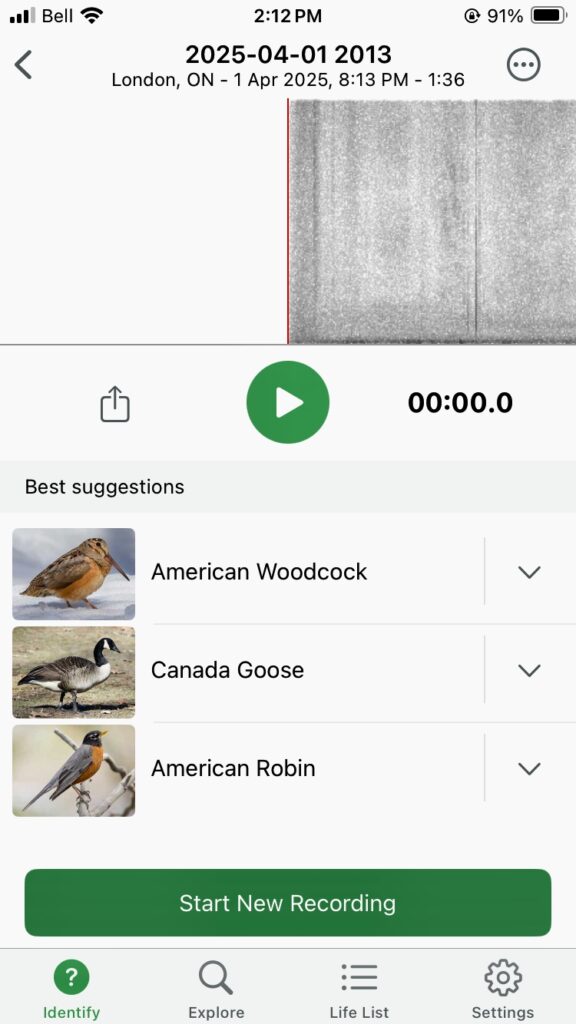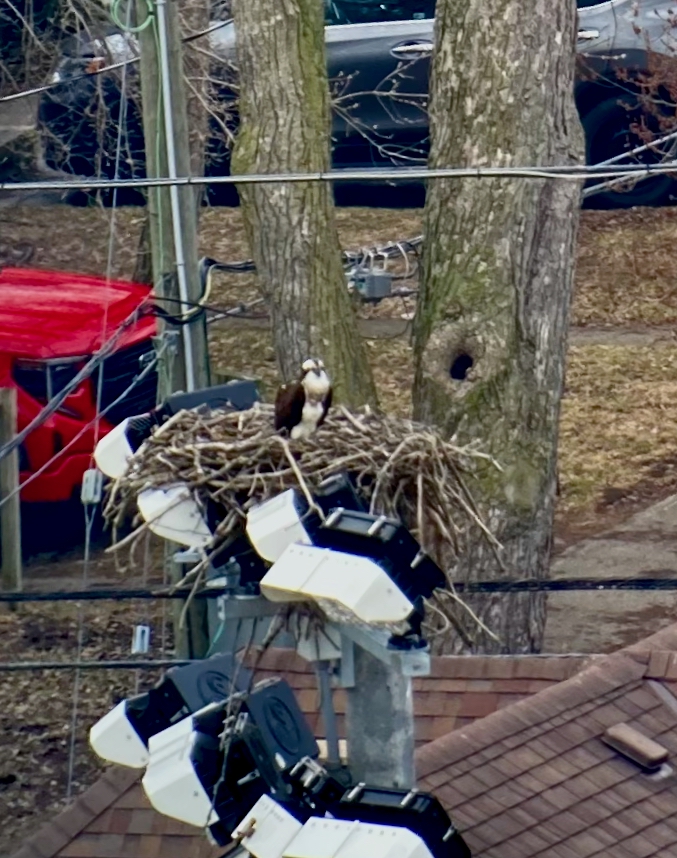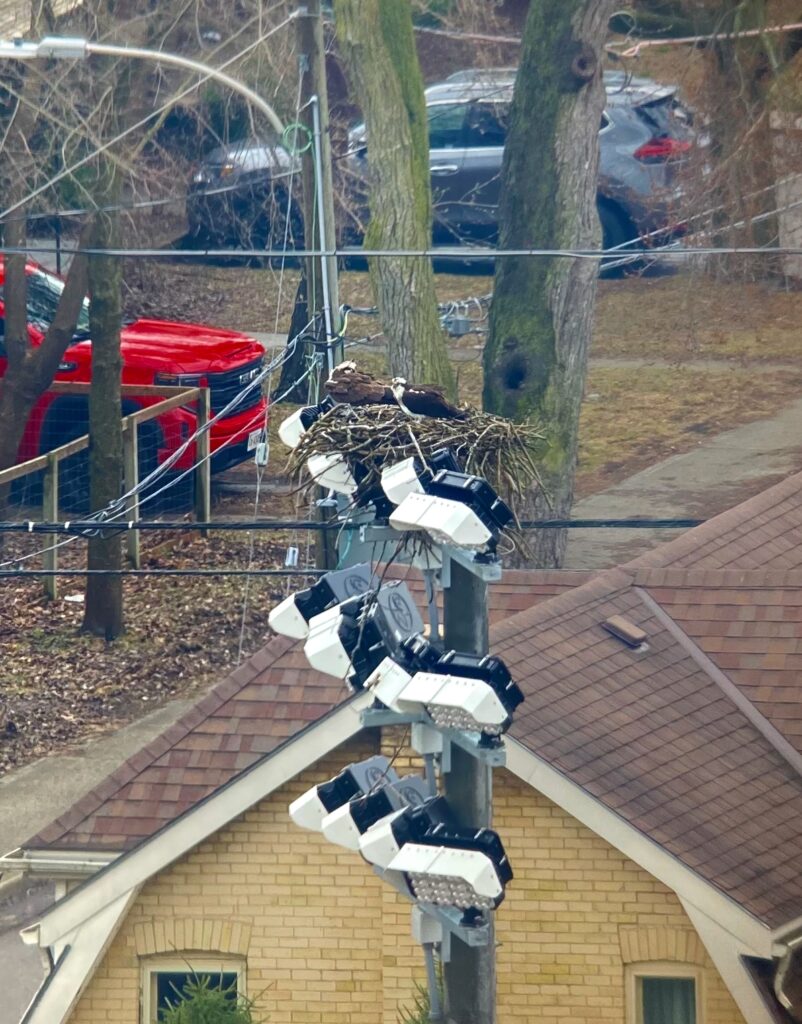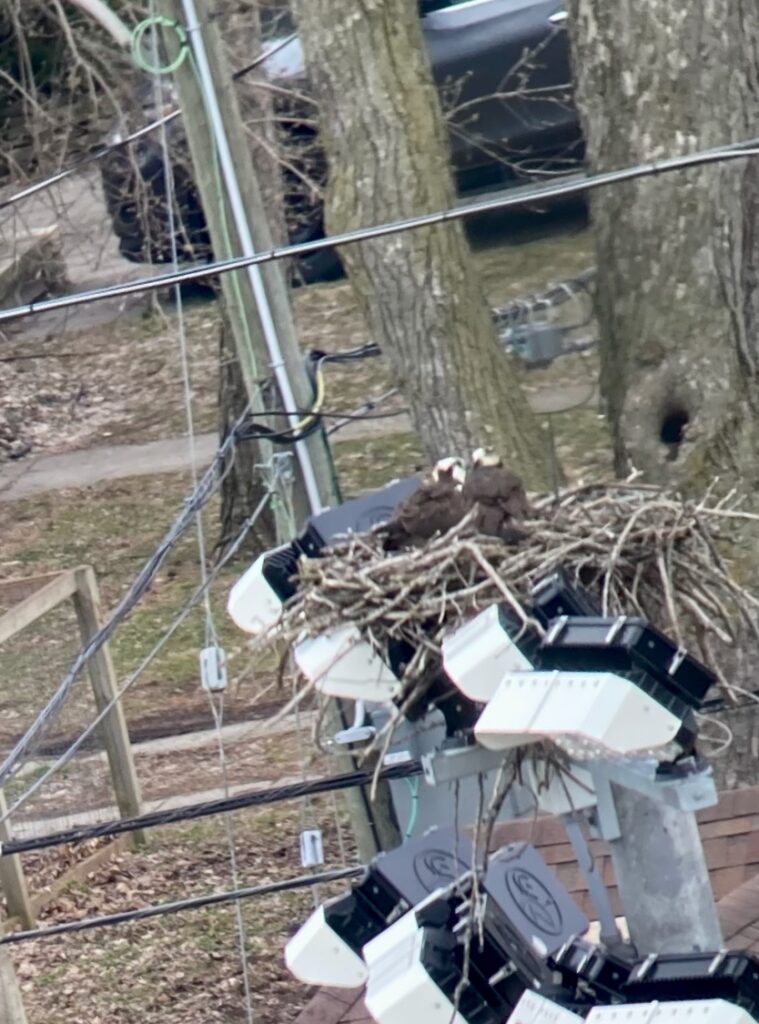We’ve resolved that whenever there is sun, we will drop everything and go outside. Tuesday was such a day, especially since the weather forecast held dire warnings about heavy rainfall the next day. As it turned out, Wednesday brought snow, freezing rain, and then heavy downpours accompanied by thunder and lightening.


Ice coated trees and branches, sidewalks and roads.


Thursday, the level of the river crept ever higher during the day.


Tuesday was chilly, but there was sun and blue sky. We walked north along the river. There were encouraging signs of spring – green shoots of day lilies and other plants on the bank warmed by the sun.


There were patches of Eastern Skunk Cabbage in the wet, boggy areas. For the first time, we got photos of the spadix hidden within the hood or spathe of the plants.




Skunk Cabbage is one of the first plants to emerge in the spring due to its ability to produce heat even when the ground is still frozen. In Southern Ontario, the plant usually blooms around the last week in March. The flowers are composed of a mottled maroon hood, called a spathe, that appears before the leaves. Inside the hood is a fleshy spike, called a spadix, that is actually many petal-less flowers. As the flower spike matures, it emits the scent of rotting meat to attract pollinators such as flies and carrion beetles. This unpleasant odour is carried on the air by the heat rising from the flower.
A few birds foraged in the water-logged areas close to the river. A pair of Song Sparrows were keeping company. A female Mallard dozed. A robin and a Dark-eyed Junco were more active.





There was lots of bird activity along the neighbourhood streets. Canada Geese lounged on the grass. This European Starling had just returned from the hairdresser! The American Robin was less well groomed after searching for worms or insects in the ground.




There is a noisy flock of House Sparrows in the neighbourhood that often shelters inside a euonymus bush. On a fine day, the birds perch in plain view like tree decorations to capture the warmth of the sun.


London seems to be home to many House Finches. As we walk downtown, we are often greeted by the warbling songs of House Finches. Male House Finches find positions on buildings that amplify their songs and broadcast them to establish territory and/or attact mates.
Several pairs of House Finches seem to setting up residence in neighbourhood spruce trees. The males are vibrant in their breeding plumage. The females’ plumage is elegant, but understated. House Finches are year-round residents that eat mostly plant materials such as seeds, buds and fruits. They nest in trees or on buildings.








On Tuesday evening, we ventured out hoping to see the male American Woodcock’s courtship display, sometimes called a sky dance or display flight. These flights are performed at dawn and after sunset to attract a female.
While waiting for sunset, we surveyed the nearby pond and watched two muskrats whose den appeared to be inside a storm drain.


Pussy Willows were growing at the edge of the pond. A Song Sparrow perched on low branches, barely visible in the low light.



We looked and listened for woodcock activity. As it grew dark, we heard the distinct “peent” call several times, but saw no movement to help us locate a bird. We’ll have to try another time!
Screenshot of a Merlin recording of the woodcock…

Osprey News
After arriving on March 27th, the female Osprey spent most of her time on the nest, protecting the site and waiting for her mate to arrive. She caught fish that she consumed on the low platform.
The male Osprey finally showed up on March 30th. It did not seem to be a joyful reunion. For several days, the two seemed to largely ignore each other, even when on the nest together. We did not witness any courtship behaviour such as the male bringing fish or a stick. The female was usually on the nest, the male often spent time away from the nest or on the low platform. We wondered if he was still intent on nesting there, rather than on the lights. During the snow and rain, both birds were off the nest, but the female returned the next day followed by the male. The male has stayed on the nest with the female for longer periods of time and has been in closer contact with her. We’ve witnessed no mating behaviour as yet…The female continues to spend most of her time on the nest.





Rock and Roll from 1960 and 1961
Each image below is for the first song of each playlist. Click on the red button in the centes of each image.